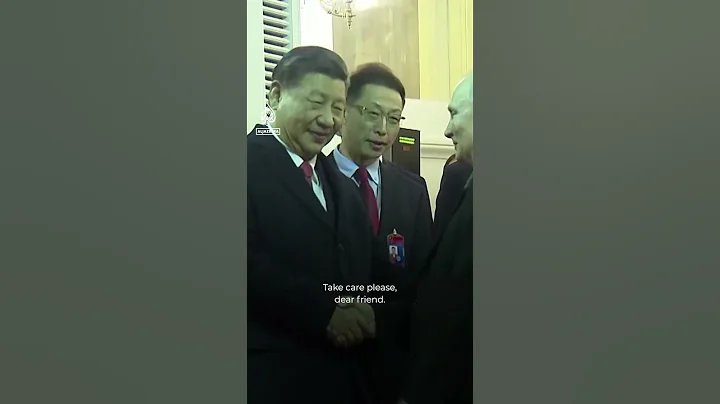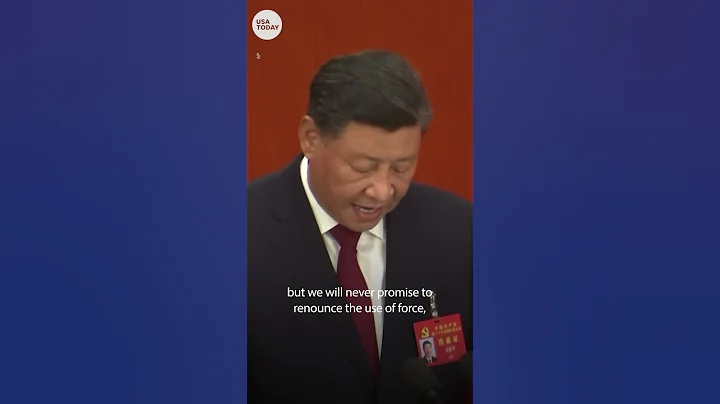Author: Zhu Daoben (Academician of the Chinese Academy of Sciences, former director of the Institute of Chemistry, Chinese Academy of Sciences)
Editor’s note:
On the eve of this year’s May Fourth Youth Day, General Secretary Xi Jinping sent a message to the youth of the new era: “Chinese youth in the new era must inherit and carry forward the May Fourth spirit. We must strengthen our ideals and beliefs, stand firm on the people's stand, develop strong skills, devote ourselves to the great cause of strengthening the country, always maintain a forward attitude of hard work, and fight bravely on the new Long March to realize the Chinese dream of the great rejuvenation of the Chinese nation together with hundreds of millions of people." The journal published an article by Zhu Daoben, an academician of the Chinese Academy of Sciences, in which he encouraged young people to work hard and pursue their scientific dreams in the new era.

Recently, young technicians are producing new thermometers. Xinhua News Agency published
The battle against the new coronavirus epidemic has greatly enhanced the national pride and national responsibility of contemporary young people. In the process of fighting the epidemic, we monitor the onset points of new coronavirus infection cases, conduct big data comparisons, and track clues of people who have been in close contact with suspected patients; open artificial intelligence computing power to accelerate virus analysis and vaccine research and development... From treatment to prevention and control, from scientific research From solving key problems to equipment production, our country's scientific and technological personnel have used various high and new technologies to help the country win the battle against epidemic prevention and control. This also fully illustrates the importance of scientific undertakings. Youth are the future of the country and the hope of the nation. Young innovative talents should aim at the world's scientific frontier and devote themselves to scientific undertakings.
1. Looking at the historical responsibilities of my country’s scientific and technological workers from the perspective of the “Needham Problem”
British science history expert Joseph Needham’s “History of Science and Technology in China” said that more than 300 years ago, China had always been a technological power in the world, accounting for 50% of scientific and technological inventions. from China. He raised the "Needham Problem": Why were the ancient Chinese people far more developed in science and technology than Europe at the same time between the first century BC and the sixteenth century AD? Why did China's separation of church and state, selection system, private school education and hundreds of schools of thought not appear in Europe at the same time? Why did modern science not originate in China, but in the West in the seventeenth century, especially in Europe after the Renaissance?

Young researchers at the Institute of Chemistry, Chinese Academy of Sciences are at work. Bright Picture
answers these questions and can briefly review the history of world science. Since the European Renaissance, the modern scientific system has initially taken shape. Copernicus' "heliocentric theory" caused astronomy to undergo a profound revolution; Galileo broke through Aristotle's explanation of the motion of objects and their causes; Kepler discovered the laws of celestial motion; Newton constructed classical mechanics.
In the 18th century, steam engines and textile machines promoted the industrial revolution. Britain seized the opportunities of these two technological revolutions and led the industrial revolution.
In 1900, Planck proposed the concept of "quantum"; Heisenberg and Schrödinger created matrix mechanics and wave mechanics respectively; Einstein proposed the special theory of relativity and general relativity, and the basic framework of the modern physical science system was formed. This brought about the vigorous rise and development of industry in the 20th century. Later, the invention of the computer led to the information revolution.
At the end of the Ming Dynasty and the beginning of the Qing Dynasty, China's status as a technological power was a thing of the past. The technological gap between China and the West was widening day by day. Most people were ignorant of the industrial revolution and the rise of modern science, causing China to lose valuable development opportunities. It was not until 1879 that modern scientific thought represented by Newton's three laws was introduced to China.
When New China was founded, there were no more than 50,000 scientific and technological personnel in the country, and there were only more than 30 specialized research institutions. Moreover, the scale, team, research fields and conditions of these 30+ institutions cannot be compared with today.
In 1955, there were more than 840 scientific research institutions nationwide, and the number of scientific and technological personnel increased to 400,000.
In 1978, the National Science and Technology Conference was held, ushering in the spring of science.
After the 18th National Congress of the Communist Party of China, our country has become a technological power with important influence, and technological innovation has increasingly played an increasingly supporting and leading role in economic and social development. At the same time, it must be recognized that compared with the goal of building a world power in science and technology, my country's development still faces major scientific and technological bottlenecks. The pattern of core technologies in key areas being controlled by others has not fundamentally changed. The scientific and technological foundation is still weak. Core scientific and technological innovation capabilities, especially original innovation, have not fundamentally changed. Ability still needs to be improved.
Throughout the history of human development, innovation has always been an important force in promoting the development of a country and a nation, and also an important force in promoting the development of the entire human society. Innovation is multifaceted, including theoretical innovation, institutional innovation, and institutional innovation. , talent innovation, etc., but the status and role of scientific and technological innovation are very important. As a large developing country, our country is currently vigorously promoting the transformation of economic development methods and economic structural adjustment, and must implement the innovation-driven development strategy well.
Countries around the world have elevated technological innovation to national development strategies, significantly increased investment, strengthened strategic deployment, and competed for talents. Faced with the huge changes in the global economic landscape, for example, the United States proposed the "Science and Innovation Plan." The development of science and technology in the world has been in a rapid development trend, with major frontier breakthroughs in basic sciences, interdisciplinary and technological integration accelerating, and the flow of innovative elements and resources accelerating. Material science is developing towards macroscopic expansion, microscopic depth and extreme conditions. Unraveling the mystery of dark matter and dark energy will be another major leap in human understanding of the universe. For example, research on the quantum world has shifted from observation and explanation to manipulation, and is at a new starting point of "regulation." Genomics and systems biology research is entering a new stage of systematically analyzing the laws of life. The four major convergence technologies of NBIC pay more attention to the development trends of cross-science, global climate, energy, environment, health and safety.
New breakthroughs in science and technology will have a major impact on mankind. They will trigger major changes in social production methods, global competition patterns, and people's lifestyles. They will also lead to major changes in the subject system. There will be more choices in scientific research models, and more comprehensive and interdisciplinary research will be more prominent. Whether our country's scientific and technological workers can seize the historical opportunity and catch up is of great significance.
2. Young scientific and technological workers should aim at the world's cutting-edge science and be good at cross-research.
Young people should have great ambitions and aim at the world's cutting-edge scientific research. In 1905, when Einstein was only 26 years old, he published five articles, each of which had a profound impact. It only took ten years for him to win the Nobel Prize in Physics, from being nominated in 1910 to winning the prize in 1921, in the name of the law of the photoelectric effect. Today, Einstein is recognized as the greatest physicist, and he has had an impact for a hundred years. In 2005, the international community dedicated a whole year to commemorate his great achievements, because without Einstein's mass-energy relationship, the development of atomic energy would not be possible, and without quantum mechanics, transistors and integrated circuits would be impossible.
In 2001, Mr. Wu Wenjun, who won the first highest science and technology award, believed in the report "In "Exploration and Practice"-My Scientific Research Process": Scientific practice must "look at the world, base itself on the country, and find its own path." He pointed out: Ancient Chinese mathematics is completely different from Western axiomatic mathematics that originated from ancient Greece. Western modern mathematics is an axiomatic research system and a mathematics that pursues theorem proof, while ancient Chinese mathematics does not consider theorems at all, let alone Regardless of how to prove the theorem, the main purpose is to solve various problems raised in practice, which leads to the method of solving equations, expressed in the so-called "skills" of arithmetic. Since the 1980s, he has found his own path - mechanized mathematics, which is based in China and not influenced by foreign countries.
When doing scientific research, young people must be good at grasping directions, discovering opportunities, good at collaborative cooperation, good at accumulating, good at mastering dialectics, good at doing cross-research, and good at learning from nature. Today, the source of strategic emerging industries is conceptual innovation, and being good at grasping conceptual innovation is the prerequisite for choosing the right direction. For example, new quantum materials - topological insulators: novel quantum effects, quantum anomalous Hall effect, magnetic monopoles, Majorana fermions, fractional quantum statistics, topological magnetic effects, giant thermoelectric effects.
Young people’s innovative research must be good at discovery: In 1967, when Dr. Byeon Hyung-nao from South Korea, who was studying at Tokyo Institute of Technology in Japan, made polyacetylene in the laboratory, he added a thousand times excess catalyst, resulting in a black powder of polyacetylene. (cis polyacetylene), but turned into a silvery white film (trans polyacetylene). Dr. Hideki Shirakawa, who was an assistant at the Ikeda Research Institute at the time, began to study polyacetylene based on this result.In 1976, at the invitation of American chemist Alan McDiarmid and physicist Alan Haig, Shirakawa visited the University of Pennsylvania in the United States. After measuring iodine-doped trans-polyacetylene, they discovered The conductivity increased by a billion times. In the summer of 1977, Shirakawa, McDiarmid and Haig published their research results and won the 2000 Nobel Prize in Chemistry.
Young people doing scientific research must be good at collaboration. For example, researchers from the Key Laboratory of Organic Solids, Chinese Academy of Sciences, and the State Key Laboratory of Superconductivity, Institute of Physics, Chinese Academy of Sciences, collaborated to discover the first metal-organic coordination polymer superconductor.
also needs to be good at accumulating knowledge. For example, the discovery of molecular switches came from the research on "insecticides".
We must learn and master dialectics: When Mr. Li Zhensheng talked about "Prospects and Innovations in Scientific Research," his deepest understanding was that dialectical materialism is the guideline for various sciences, because dialectical materialism is the summary and synthesis of various scientific laws. In his scientific practice, he encountered an epidemic wheat disease (wheat stripe rust) in the northwest. Using dialectical thinking, he found two reasons and used distant hybridization to transfer the disease resistance of grass to wheat. He persisted for 30 years. , achieved success.
Young people doing scientific research must be good at cross-research. For example, Bloch (using induction method) and Purcell (using absorption method) independently discovered the phenomenon of macroscopic nuclear magnetic resonance and won the 1952 Nobel Prize in Physics. Emstl received the 1991 Nobel Prize in Chemistry for his outstanding contributions to NMR spectroscopy methods, Fourier transform, and two-dimensional spectroscopy technology. The result of the 1998 Nobel Prize in Chemistry was the intersection of mathematics, physics, and chemistry. There is also Walter Kuth's density functional theory, which allows quantum mechanical methods to be directly applied to the calculation of macromolecules, such as the calculation of biological macromolecules.
Young people who engage in scientific research must also be good at imitating nature, and must have an innovative spirit and perseverance. For example, the 2010 Nobel Prize in Physics was awarded to scientists Andre Geim (51 years old) and Konstantin Novosezov (36 years old) from the University of Manchester in the United Kingdom for their outstanding research on graphene materials.
3. Young people should establish scientific values and serve the country
At present, various values and concepts have emerged in society. Young people should actively practice the core socialist values, establish scientific values and serve the country.
Science is the study of the objective world, solving the problems of "what" and "why", and solving the problem of truth-seeking. It is necessary to create a good innovation environment for the growth and success of young people, including an environment that is conducive to stimulating innovation; an environment that is conducive to the integration of innovation and the realization of innovation sublimation and transformation; an environment that is conducive to the growth of innovative talent teams; an environment that is conducive to the development of team spirit ; An environment conducive to improving the scientific quality of the entire population.
Technology managers must realize that management innovation and system innovation are closely related and can promote or restrict each other, but effectiveness is the key to both. The objects of our management are knowledgeable people - scientific and technological workers. Therefore, we cannot simply borrow general management methods. "Management" means service, and "management" means being effective and scientific.
Young talents are the key, and these problems should be avoided during training: non-standard evaluation management, unscientific evaluation methods, unobjective evaluation results, which lead to and encourage impetuous scientific researchers, "fudge" mentality, academic misconduct and worsen the academic atmosphere.
The ancients said: "People must love themselves, and then others will love others; people must respect themselves, and then others will respect others." I hope that the older generation of academicians will cultivate their righteousness and adhere to the academic and honorary nature of the academician title. , spread the truth, spread true knowledge, respect virtue and ask for kindness, think about talents when seeing them, support young students, be willing to serve as a ladder, establish good morals in the whole society, create a good innovation environment for young people, and build a good environment for them to make contributions. Scientific research platform.
Today's scientific research is no longer limited to single disciplines, but is developing into interdisciplinary fields. Whether it is scientific research or social production and life, the problems faced are more complex. The solution of problems often requires the cross-integration of various disciplines. Nearly half of the Nobel Prizes awarded in the past century are the result of cross-disciplinary integration."Skills have specializations", and working behind closed doors cannot continuously improve personal abilities. Young people must strengthen their awareness of cooperation, which will greatly improve the efficiency of scientific research and enhance their ability to solve problems.
hopes that young people can keep in mind the historical mission of scientific researchers, seize the opportunities given by the times, strive to improve their own quality, contribute to the development of scientific undertakings, and work hard to realize the Chinese dream of the great rejuvenation of the Chinese nation!
"Guangming Daily" (Page 16, May 07, 2020)





















